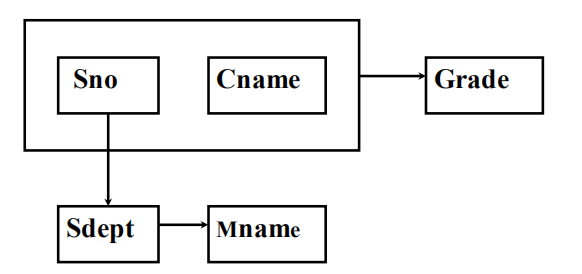PE 111 Primes with runs (数位dp)
Primes with runs
Problem 111
Considering 4-digit primes containing repeated digits it is clear that they cannot all be the same: 1111 is divisible by 11, 2222 is divisible by 22, and so on. But there are nine 4-digit primes containing three ones:
1117, 1151, 1171, 1181, 1511, 1811, 2111, 4111, 8111
We shall say that M(n, d) represents the maximum number of repeated digits for an n-digit prime where d is the repeated digit, N(n, d) represents the number of such primes, and S(n, d) represents the sum of these primes.
So M(4, 1) = 3 is the maximum number of repeated digits for a 4-digit prime where one is the repeated digit, there are N(4, 1) = 9 such primes, and the sum of these primes is S(4, 1) = 22275. It turns out that for d = 0, it is only possible to have M(4, 0) = 2 repeated digits, but there are N(4, 0) = 13 such cases.
In the same way we obtain the following results for 4-digit primes.
| Digit, d | M(4, d) | N(4, d) | S(4, d) |
| 0 | 2 | 13 | 67061 |
| 1 | 3 | 9 | 22275 |
| 2 | 3 | 1 | 2221 |
| 3 | 3 | 12 | 46214 |
| 4 | 3 | 2 | 8888 |
| 5 | 3 | 1 | 5557 |
| 6 | 3 | 1 | 6661 |
| 7 | 3 | 9 | 57863 |
| 8 | 3 | 1 | 8887 |
| 9 | 3 | 7 | 48073 |
For d = 0 to 9, the sum of all S(4, d) is 273700.
Find the sum of all S(10, d).
题意:
有重复数字的素数
考虑一个有重复数字的4位素数,显然这4个数字不能全都一样:1111被11整除,2222被22整除,依此类推;但是,有9个4位素数包含有三个一:
1117, 1151, 1171, 1181, 1511, 1811, 2111, 4111, 8111
我们记M(n, d)是n位素数中数字d重复出现的最多次数,N(n, d)是这类素数的个数,而S(n, d)是这类素数的和。
因此M(4, 1) = 3是4位素数中数字1重复出现的最多次数,有N(4, 1) = 9个这类素数,而它们的和是S(4, 1) = 22275。还能得出,对于d = 0,在4位素数中最多重复出现M(4, 0) = 2次,但是有N(4, 0) = 13个这类素数。
同样地,我们可以得到4位素数的如下结果。
| 数字d | M(4, d) | N(4, d) | S(4, d) |
|---|---|---|---|
| 0 | 2 | 13 | 67061 |
| 1 | 3 | 9 | 22275 |
| 2 | 3 | 1 | 2221 |
| 3 | 3 | 12 | 46214 |
| 4 | 3 | 2 | 8888 |
| 5 | 3 | 1 | 5557 |
| 6 | 3 | 1 | 6661 |
| 7 | 3 | 9 | 57863 |
| 8 | 3 | 1 | 8887 |
| 9 | 3 | 7 | 48073 |
对于d = 0至9,所有S(4, d)的和为273700。
求所有S(10, d)的和。
题解:暴力也行,大概1min,数位dp更快,100ms。
代码:
#include<bits/stdc++.h>using namespace std;typedef long long ll;set<ll>s;int isPrime(ll n){for(ll i=2;i<=(ll)sqrt(n);i++){if(n%i==0)return 0;}return 1;}void gao(ll num, int pos, int len, int repeat_Dig, int num_repeat_Dig, set<ll>& s){if(len - pos < num_repeat_Dig) return;if(pos == len){if(isPrime(num)){s.insert(num);}return ;}if(num_repeat_Dig != 0 && !(repeat_Dig == 0 && pos == 0)){gao(num * 10 + repeat_Dig, pos + 1, len, repeat_Dig, num_repeat_Dig - 1, s);}for(int i = pos == 0 ? 1 : 0; i <= 9; i++){if(i == repeat_Dig) continue;gao(num * 10 + i, pos + 1, len, repeat_Dig, num_repeat_Dig, s);}return ;}int main(){int n;cin>>n; //位数ll ans = 0;for(int dig = 0; dig <= 9; dig++) //数字dig重复次数最多的数{s.clear();for(int num_repeat_Dig = n; num_repeat_Dig >= 1; num_repeat_Dig--){gao(0, 0, n, dig, num_repeat_Dig, s);if(!s.empty()){ll sum = 0;for(set<ll>::iterator it=s.begin();it !=s.end();++it){sum += *it;//cout<<*it<<endl;}cout<<sum<<endl;ans += sum;break;}}}cout<<"ans="<<ans<<endl;return 0;}



































还没有评论,来说两句吧...